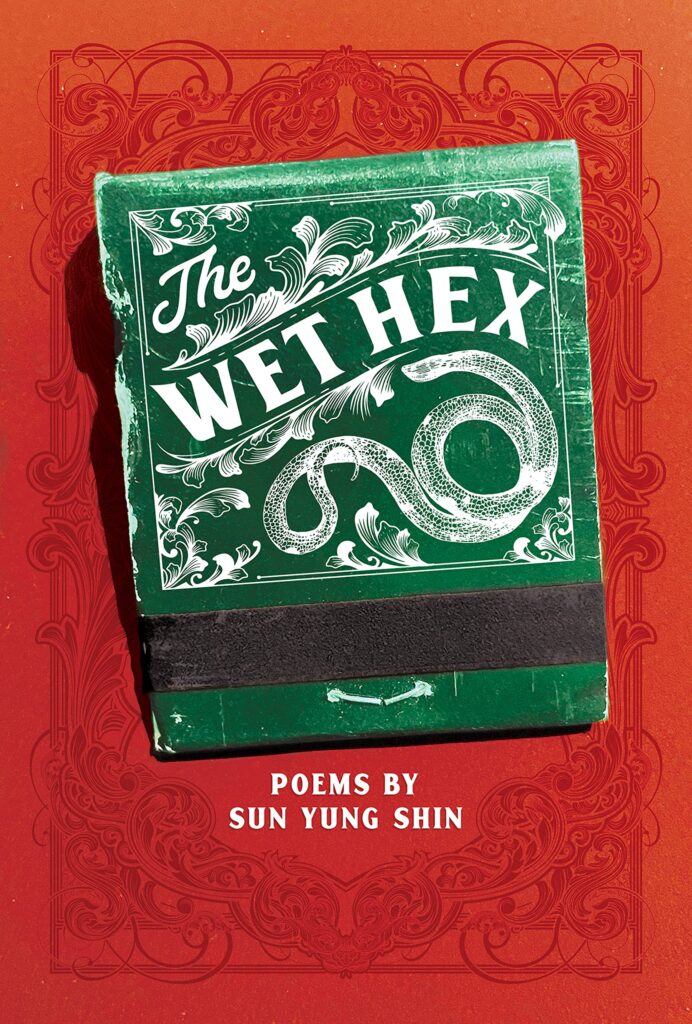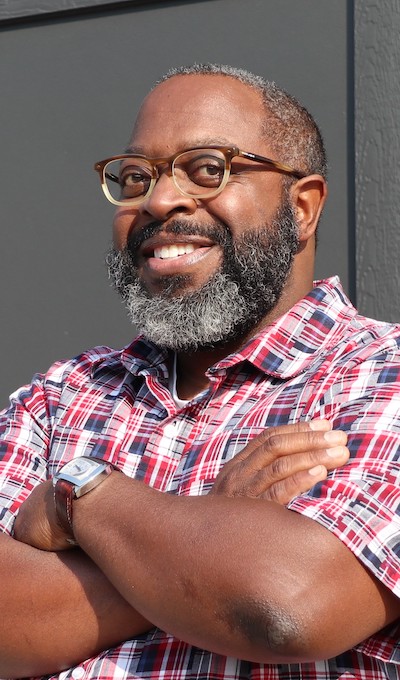If I could start to read a poetry collection with any mission in mind, I suppose I’d choose openness. I don’t want to learn anything in an academic way; I’d opt instead to experience the landscape, soundscape, and ideas the poems make available to me. As a student of poetry, I fail in this mission all the time. As I read, I gather and ponder, question, agree, disagree, change my mind, and take note of reminders, lessons, ideas, strategies, new ways.
I keep returning to Sun Yung Shin’s The Wet Hex. I read it on New Year’s Eve and again earlier this month as part of The Sealey Challenge. It is, poem-by-poem, brilliant, personal, candid, emotionally resonant, fantastic and sensational, mythical and mystical and musical, technically-sharp, lyrical, and attentive to the details in languages.
The Wet Hex is set in five sections plus an Appendix that is part poem, part lyric essay, and part translation dictionary. At the center of the book, Section 3, “The Underworld Holds All Tethers,” there dwells a poem in twelve parts, called “Gaze_ Observatory_ Threshold: A Baridegi Reimagining.” It’s a retelling of the Korean myth of Princess Bari who was abandoned by her father at birth then navigated between the world of the living and the world of the dead to care for him after he fell ill. My heart. Section 3 is also a collaboration with the visual artist Jinny Yu, whose subtle and elegant drawings, when paired with the poem, exemplify harmony in collaboration.
I could go on and on—the titles, the aesthetic range in the collection, the incorporation of government documents in ”Castaways in Paradise,” Shin’s insightful use of language, the allusions to the Bible and Moby Dick, the play in the lettering, her prosodic skill, the way Shin illuminates the sad and toxic detritus of late-stage capitalism, the poet as insistent daughter/mother at the center of it all.
As a reader, in some ways I did what I usually do. I pondered and gathered, thinking and thinking. Overall, I felt reminded that we can do anything, so we should: push publishers to the limit—collaborate with visual artists, build columns, upload docs, lay bare our bones in a lexicographical Appendix. But that’s what remained as I set the book on my dining room table, close enough to consult when I want to reread one of my favorites—“My First Voyage Out.” Here’s what I didn’t even actually notice until I’d completed both laps through The Wet Hex—at a certain point I put my pencil down. I fell away from concern for craft and entered the poet’s world. For quite a while there, I forgot to think and felt my way through instead—guided by an expert, open.




